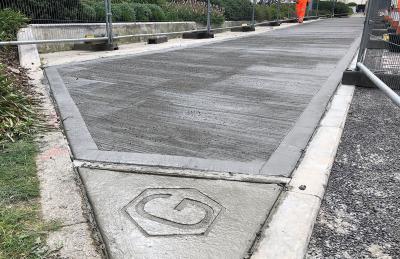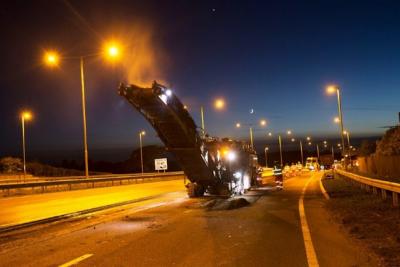Graphene has a great potential in the construction industry, to increase the performance of materials and structures, to reduce costs and to reduce the environmental footprint of one of the world's most polluting industries.
After years of R&D, it seems as if graphene is finally get ready for commercial adoption on the market. Here's a short interview we did with James Baker, the CEO at Graphene@Manchester who's behind much of the progress we've seen recently.
Q: It appears that graphene-enhanced construction materials are entering the final stage of verification, with real-world testing and implementation. How do you see the potential of such materials? What are the main benefits of graphene in this market?
Graphene enhanced concrete is still at the early stages of verification but with our partners Nationwide Engineering, we have developed a graphene enhanced admixture called concretene which supports the main goal for stronger concrete but with reduced CO2 emissions.

Other companies are also developing solutions for adding graphene to concrete to improve strength but a key feature with concretene is that we can achieve the performance of an engineered concrete slab (e.g. floor) using up to 30% less cement and also with no need for steel reinforcement making a significant corresponding reduction in CO2 emissions.
Q: Graphene-enhanced concrete has been recently tested in Manchester. Can you share the experience of working with this material?
We are undertaking a significant test programme in Manchester working with Nationwide Engineering with support and funding from Innovate UK but we have also complemented this with four livingâlab real commercial pours including a gymnasium, a residential development, a road and a roller-skating ring in Manchester.
Q: We have seen graphene-enhanced concrete, cement and asphalt. What other applications do you see in the construction market?
In addition to concrete we have also supported our partners National Highways with a graphene enhanced asphalt looking at reducing pot-holes on our road network. We are also working on anti-corrosion paints for crash barriers and buildings and in the future I see a trend driven by sustainability to look at using recycled materials, which with the addition of graphene have enhanced performance.

A good example of this is our partner SpaceBlue who are looking to take recycled tyres and with graphene develop a range of rubber flooring and other products that could play a role in construction.
Q: There seem to be many projects aiming to use graphene in concrete. How or will the market consolidate all these efforts?
A key challenge for graphene in concrete is the verification and achievement of new standards. Concrete accounts for between 8-10% of global CO2 emissions so it is a huge market opportunity and will need graphene supply from both existing supply-chain and the creation of new supply chain companies if this approval is achieved.
Q: In recent months, we have heard many announcements in the UK regarding graphene projects, in Manchester and elsewhere - from both companies and Universities. How important will graphene be for UK's economy? Do you see this as a major avenue of development?
Graphene, after (just) 17 years is now entering a key phase and approaching a tipping-point of commercialization with an increasing number of products and applications starting to enter the market.
The investments in the NGI and GEIC at Manchester being a key catalyst for both the creation of new science but also involved in the industrialization and partnerships with industry to create value for Manchester and the UK.
Thank you James for this interview, and we hope to keep hearing good news from the GEIC and its partners!